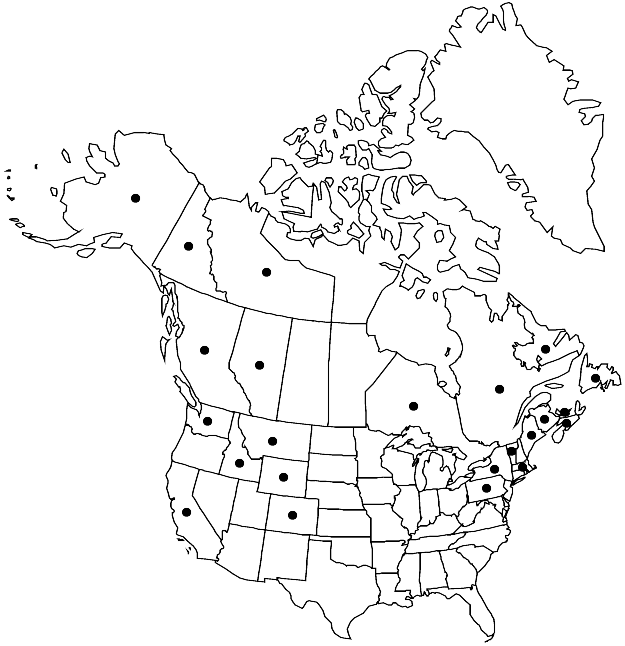Difference between revisions of "Pohlia andalusica"
in H. G. A. Engler and K. Prantl, Nat. Pflanzenfam. 218[I,3]: 551. 1903.
FNA>Volume Importer |
imported>Volume Importer |
||
| (3 intermediate revisions by 2 users not shown) | |||
| Line 1: | Line 1: | ||
{{Treatment/ID | {{Treatment/ID | ||
|accepted_name=Pohlia andalusica | |accepted_name=Pohlia andalusica | ||
| − | |accepted_authority=(Höhnel) Brotherus | + | |accepted_authority=(Höhnel) Brotherus |
|publications={{Treatment/Publication | |publications={{Treatment/Publication | ||
|title=in H. G. A. Engler and K. Prantl, Nat. Pflanzenfam. | |title=in H. G. A. Engler and K. Prantl, Nat. Pflanzenfam. | ||
| Line 10: | Line 10: | ||
|name=Webera andalusica | |name=Webera andalusica | ||
|authority=Höhnel | |authority=Höhnel | ||
| + | |rank=species | ||
|publication_title=Sitzungsber. Kaiserl. Akad. Wiss., Wien, Math.-Naturwiss. Cl., Abt. | |publication_title=Sitzungsber. Kaiserl. Akad. Wiss., Wien, Math.-Naturwiss. Cl., Abt. | ||
|publication_place=1, 104: 326. 1895 | |publication_place=1, 104: 326. 1895 | ||
| Line 37: | Line 38: | ||
-->{{#Taxon: | -->{{#Taxon: | ||
name=Pohlia andalusica | name=Pohlia andalusica | ||
| − | + | |authority=(Höhnel) Brotherus | |
| − | |authority=(Höhnel) Brotherus | ||
|rank=species | |rank=species | ||
|parent rank=genus | |parent rank=genus | ||
| Line 52: | Line 52: | ||
|publication year=1903 | |publication year=1903 | ||
|special status= | |special status= | ||
| − | |source xml=https:// | + | |source xml=https://bitbucket.org/aafc-mbb/fna-data-curation/src/2e0870ddd59836b60bcf96646a41e87ea5a5943a/coarse_grained_fna_xml/V28/V28_328.xml |
|genus=Pohlia | |genus=Pohlia | ||
|species=Pohlia andalusica | |species=Pohlia andalusica | ||
Latest revision as of 21:35, 5 November 2020
Plants small to medium-sized, green, ± glossy. Stems 0.3–3 cm. Leaves ± erect, lanceolate, 0.8–1.1 mm; margins serrulate to serrate in distal 1/3; costa subpercurrent; distal medial laminal cells rhombic to rhomboidal, 65–95 µm, walls thin. Specialized asexual reproduction usually present when sterile; axillary gemmae 2–8, obconic to oblong, shorter than leaves, yellow, pink, or green, leaf primordia usually at apex, occasionally more proximally, laminate. Sexual condition dioicous; perigonial leaves ovate; perichaetial leaves scarcely differentiated, lanceolate. Seta orange-brown. Capsule inclined 95–180°, brown to stramineous, pyriform, neck 1/3 urn length; exothecial cells short-rectangular, walls sinuate; stomata superficial; annulus present; operculum convex-conic; exostome teeth yellow-brown, narrowly triangular-acute; endostome hyaline, basal membrane 1/2 exostome length, segments distinctly keeled, broadly perforate, cilia short to rudimentary. Spores 16–21 µm, finely roughened.
Phenology: Capsules mature summer (Jun–Aug).
Habitat: Acid, gravelly or sandy disturbed soil, path banks, stream banks
Elevation: low to high elevations
Distribution

Alta., B.C., N.B., Nfld. and Labr., N.W.T., N.S., Ont., P.E.I., Que., Yukon, Alaska, Calif., Colo., Idaho, Maine, Mass., Mont., N.Y., Pa., Vt., Wash., Wyo., Europe.
Discussion
Plants of Pohlia andalusica have pink stems. The gemmae occur in clusters of two to six in a few distal leaf axils and are reddish brown to green or sometimes reddish yellow. The gemmae are obconic in shape, with laminate leaf primordia at the apices. Pohlia andalusica is one of the most common gemmiferous species in New England, but is much more rare in western North America.
Selected References
None.